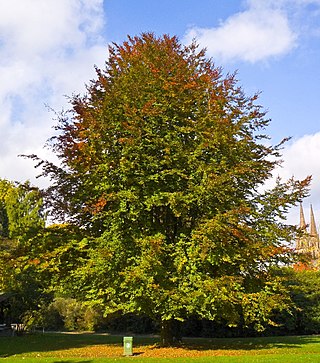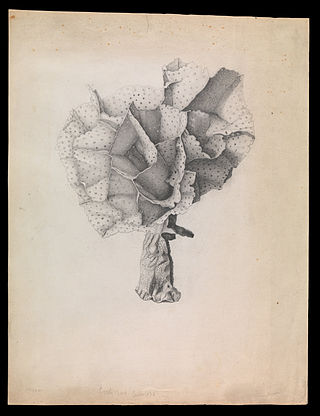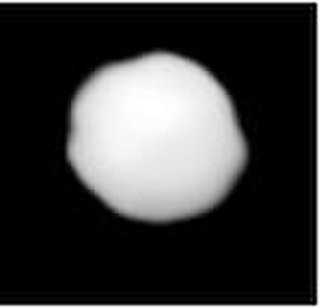Family is one of the eight major hierarchical taxonomic ranks in Linnaean taxonomy. It is classified between order and genus. A family may be divided into subfamilies, which are intermediate ranks between the ranks of family and genus. The official family names are Latin in origin; however, popular names are often used: for example, walnut trees and hickory trees belong to the family Juglandaceae, but that family is commonly referred to as the "walnut family".

The Fagaceae are a family of flowering plants that includes beeches, chestnuts and oaks, and comprises eight genera with about 927 species. Fagaceae in temperate regions are mostly deciduous, whereas in the tropics, many species occur as evergreen trees and shrubs. They are characterized by alternate simple leaves with pinnate venation, unisexual flowers in the form of catkins, and fruit in the form of cup-like (cupule) nuts. Their leaves are often lobed, and both petioles and stipules are generally present. Their fruits lack endosperm and lie in a scaly or spiny husk that may or may not enclose the entire nut, which may consist of one to seven seeds. In the oaks, genus Quercus, the fruit is a non-valved nut called an acorn. The husk of the acorn in most oaks only forms a cup in which the nut sits. Other members of the family have fully enclosed nuts. Fagaceae is one of the most ecologically important woody plant families in the Northern Hemisphere, as oaks form the backbone of temperate forest in North America, Europe, and Asia, and are one of the most significant sources of wildlife food.

Adeona is a genus of bryozoans in the family Adeonidae. A typical example is the Australian species Adeona cellulosa that forms large colonies with bifoliate sheets containing numerous holes (fenestrae).

Starlings are small to medium-sized passerine birds in the family Sturnidae. The Sturnidae are named for the genus Sturnus, which in turn comes from the Latin word for starling, sturnus. Many Asian species, particularly the larger ones, are called mynas, and many African species are known as glossy starlings because of their iridescent plumage. Starlings are native to Europe, Asia, and Africa, as well as northern Australia and the islands of the tropical Pacific. Several European and Asian species have been introduced to these areas, as well as North America, Hawaii, and New Zealand, where they generally compete for habitats with native birds and are considered to be invasive species. The starling species familiar to most people in Europe and North America is the common starling, and throughout much of Asia and the Pacific, the common myna is indeed common.

Alexandra is a carbonaceous asteroid from the intermediate asteroid belt, approximately 155 kilometers in diameter. It was discovered by German-French astronomer Hermann Goldschmidt on 10 September 1858, and named after the German explorer Alexander von Humboldt; it was the first asteroid to be named after a male.

Adeona is a large asteroid from the intermediate asteroid belt, approximately 150 kilometers in diameter. Its surface is very dark, and, based upon its classification as a C-type asteroid, is probably composed of primitive carbonaceous material. The spectra of the asteroid displays evidence of aqueous alteration. The Adeona family of asteroids is named after it.

Coleophora is a very large genus of moths of the family Coleophoridae. It contains some 1,350 described species. The genus is represented on all continents, but the majority are found in the Nearctic and Palaearctic regions. Many authors have tried splitting the genus into numerous smaller ones, but most of these have not become widely accepted.
166 is the natural number following 165 and preceding 167.
The Adeona or Adeonian family is a large asteroid family that formed from the parent body 145 Adeona. Its spectral type is that of a carbonaceous C-type, with currently 2,236 asteroids identified as family members. Based upon simulation studies, the Adeonian family is believed to be no more than 600 million years old, compared to a typical asteroid family age of 1–2 billion years.
1783 Albitskij, provisional designation 1935 FJ, is a carbonaceous Adeonian asteroid from the middle region of the asteroid belt, approximately 22 kilometers in diameter. It was discovered on 24 March 1935, by Georgian–Russian astronomer Grigory Neujmin at the Simeiz Observatory on the Crimean peninsula. The asteroid was named after Soviet astronomer Vladimir Albitzky.
1384 Kniertje, provisional designation 1934 RX, is a dark Adeonian asteroid from the central regions of the asteroid belt, approximately 26 kilometers in diameter. It was discovered on 9 September 1934, by Dutch astronomer Hendrik van Gent at the Union Observatory in Johannesburg, South Africa. The asteroid was named after a character in the Dutch play Op Hoop van Zegen by Herman Heijermans.
1238 Predappia, provisional designation 1932 CA, is a dark Adeonian asteroid from the central regions of the asteroid belt, approximately 21 kilometers in diameter. It was discovered on 4 February 1932, by astronomer Luigi Volta at the Observatory of Turin in Pino Torinese, Italy. It was later named after the Italian village of Predappio.
79912 Terrell, provisional designation 1999 CC3, is a dark Adeonian asteroid from the central regions of the asteroid belt, approximately 6 kilometers in diameter. It was discovered on 10 February 1999, by astronomers Walter Cooney and Ethan Kandler at the Highland Road Park Observatory, in Baton Rouge, Louisiana, United States. The asteroid was named after American astrophysicist Dirk Terrell.

Ascophora is an infraorder under order Cheilostomatida of the Bryozoa.
The Adeonellidae is a family within the bryozoan order Cheilostomatida. Colonies are often upright bilaminar branches or sheets. The zooids generally have one or more adventitious avicularia on their frontal wall. Instead of ovicells the adeonids often possess enlarged polymorphs which brood the larvae internally.

Flupirtine is an aminopyridine that functions as a centrally acting non-opioid analgesic that was originally used as an analgesic for acute and chronic pain but in 2013 due to issues with liver toxicity, the European Medicines Agency restricted its use to acute pain, for no more than two weeks, and only for people who cannot use other painkillers. In March 2018, marketing authorisations for flupirtine were withdrawn following a European Medicines Agency recommendation based on the finding that the restrictions introduced in 2013 had not been sufficiently followed in clinical practice, and cases of serious liver injury still occurred including liver failure.

Hypsoropha is a genus of moths of the family Erebidae. The genus was erected by Jacob Hübner in 1818.
Laminopora is a genus of bryozoans belonging to the family Adeonidae.
Adeona is the Roman Goddess of safe return. Like Abeona, She is sometimes considered an aspect of Juno as They both protect children; as Juno is the Roman Goddess of mothers She is of course especially concerned with the young. Together Adeona and Abeona teach the young child to walk and watch over her or his first steps; this theme of protecting the first steps of a child also extends to their protection of grown children who move away from home for the first time. Adeona name comes from the Latin verb adeo, "to approach or visit" as well as "to take possession of one's inheritance"; perhaps the connection between these two meanings lies in the idea of "to come home again". Adeona is believed to watch over children as they go to and from school, and to especially preside over bringing them home safely.









